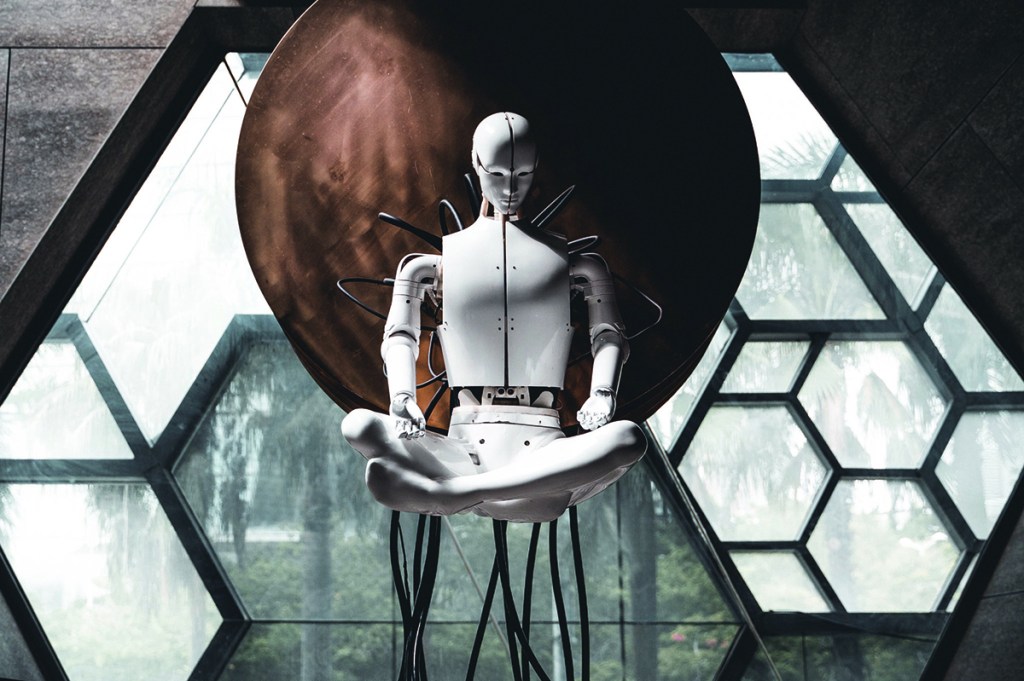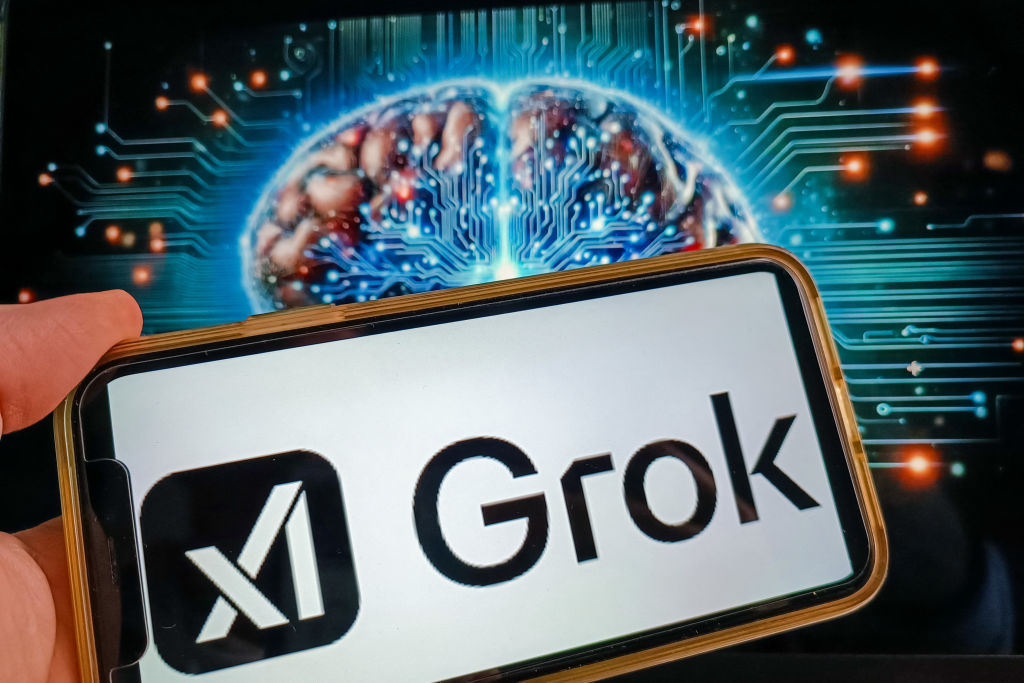In the future, men enjoying illicit private pleasures with their intelligent sexbots might be surprised to find that even women made from latex and circuitry can learn to talk back and say no. Or, alternatively, that their ‘love dolls’ — in the current marketing-speak — have been hacked by anarchist feminist programmers. Please enjoy the next, cyborg-mediated stage of the war of the sexes.
Some men, of course, still believe that women are inherently no good with computers, a dumb prejudice that Jeanette Winterson ably rebuts in this collection of interlinked essays, with stories from early computing history and several outbursts of amusing ire. Today’s tech-bro coders might be surprised to learn that their jobs wouldn’t even exist had it not been for the pioneering work of mid-20th-century female computing geniuses such as Grace Hopper in America and Stephanie (‘Steve’) Shirley in the UK.
‘Women are as smart as men,’ Winterson remarks drily at one point. ‘I am writing this self-evident proposition because the way the world is, it is not self-evident.’
This is, among other things, a very funny book. And while Winterson might have most recently attracted publicity by burning some editions of her own novels because she didn’t like the blurbs, she is no Luddite. Rather than hand-wringingly denounce all the bad things about modern technology, she prefers to accentuate the positive, even in matters such as the possibility of having a real (platonic) relationship with a robot bear or dog: ‘I could take the dystopian view — these are false connections in a false world. But that would assume that where we are now is the uber-real.’
Indeed, we are drowning in a brown soup of fakery, and we are hardly short of dystopias, fictional and otherwise. Winterson’s approach is much richer and more fun: a kind of comparative mythology, where the hype and ideology of cutting-edge tech is read through the lens of far older stories. Of one of the world’s few current quantum computers, she writes:
‘IBM Q System One lives like a reclusive rock star inside a 9-ft cube of black glass only accessible through 700lb doors… We are building a god so remote that it must live in an inaccessible temple visited only by high priests in special clothes… Quantum computing may be the future, but that story is like a Pharaoh-dream from the past.’
You can find plenty of people worried about the prospects of super-intelligent AI, meanwhile. Will such a machine try to destroy us all? Winterson doesn’t think so. For her, the problem is not that current dreams of AI and ‘transhumanism’ are religions; the problem is that they are the wrong religions. Hence a lightning tour of core concepts from Gnosticism and Buddhist traditions to explain her view that any AI will probably be a Buddhist. ‘Gnostics agree that being made of meat is ridiculous,’ for example, while computer programs know very well what past lives are like: ‘Reincarnation for a program is a regular experience; the program updates: what it was it is no longer, but there is a continuity there.’
For the sheer fun of it, Winterson also writes about vacuum tubes, the industrial revolution, the behaviorism of B.F. Skinner, and 3D printing — the first 3D printer in her view being God, who, after all, made Adam out of dust. She cracks jokes and asks rhetorical questions: ‘Why is a dick both a magic wand with special powers and a hotline to God?’ And she always emphasizes the physical. We might think of ‘data’ as something immaterial and weightless, but it depends, she notes, on a vast infrastructure of transistors and satellites.
Inevitably there are a few quibbles: the first mass-produced transistor radio was not, as Winterson says, the Sony TR-63 in 1957, but the Regency TR-1 in 1954. And at one point she claims: ‘We need to learn from the past. That is what the past is for.’ This threatens an unpleasant regress, implying that the present exists only for the edification of the future, which in turn is only for the edification of the far future, and so forth until the heat death of the universe, when all knowledge will be eradicated. What was the point of that then?
In the shorter term, should we share Winterson’s happy vision that any true AI will be ‘more intelligent than we are, but unmotivated by the greed and land-grab, the status-seeking and the violence that characterize Homo sapiens’? It is certainly hard to imagine how it could be worse than us. And despite her infectious wonder at the possibilities the future might bring, she also counsels us all to nurture the ‘inner life’, away from the glare of a screen — and everyone can surely agree with that.
This article was originally published in The Spectator’s October 2021 World edition.

























